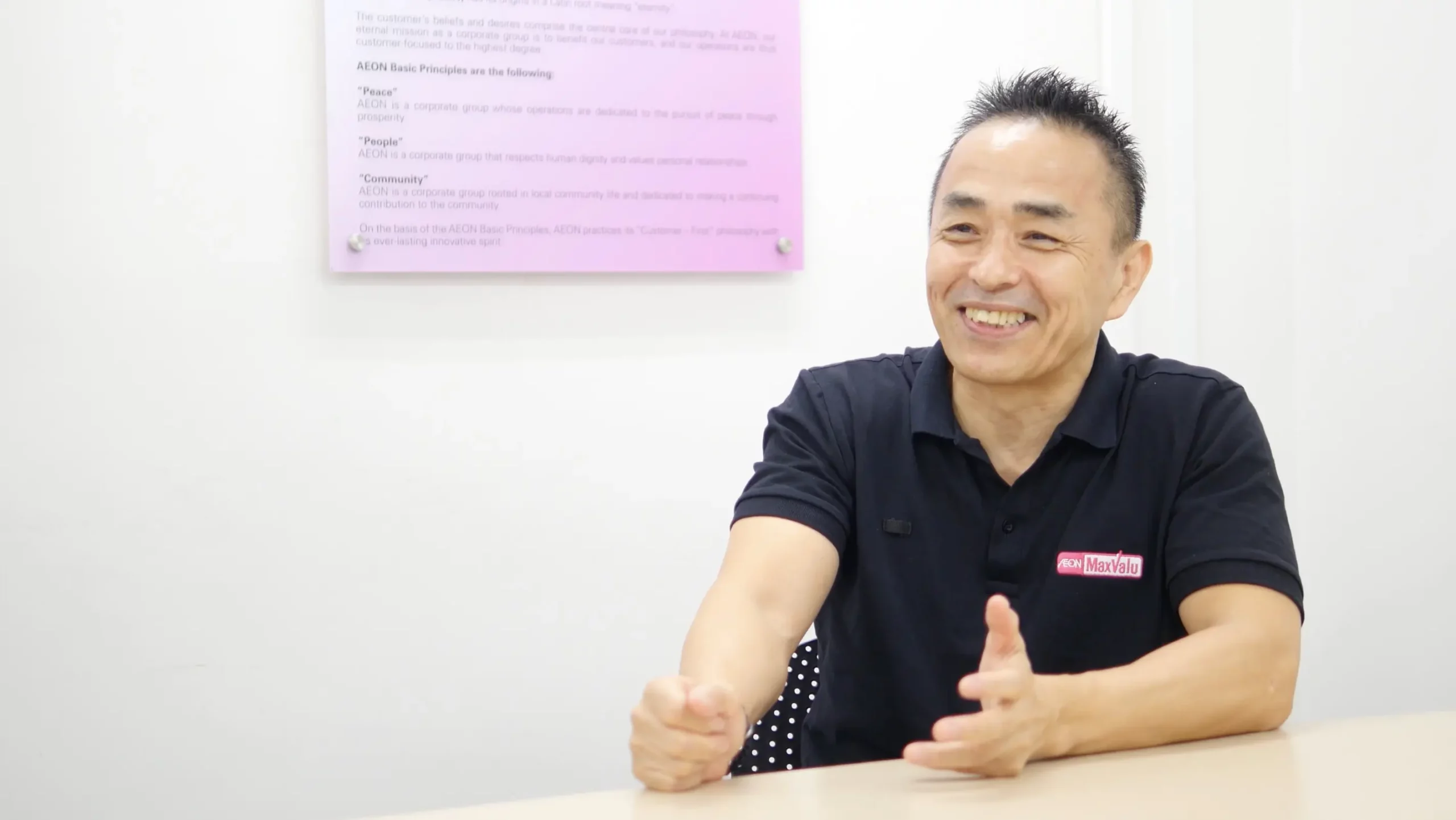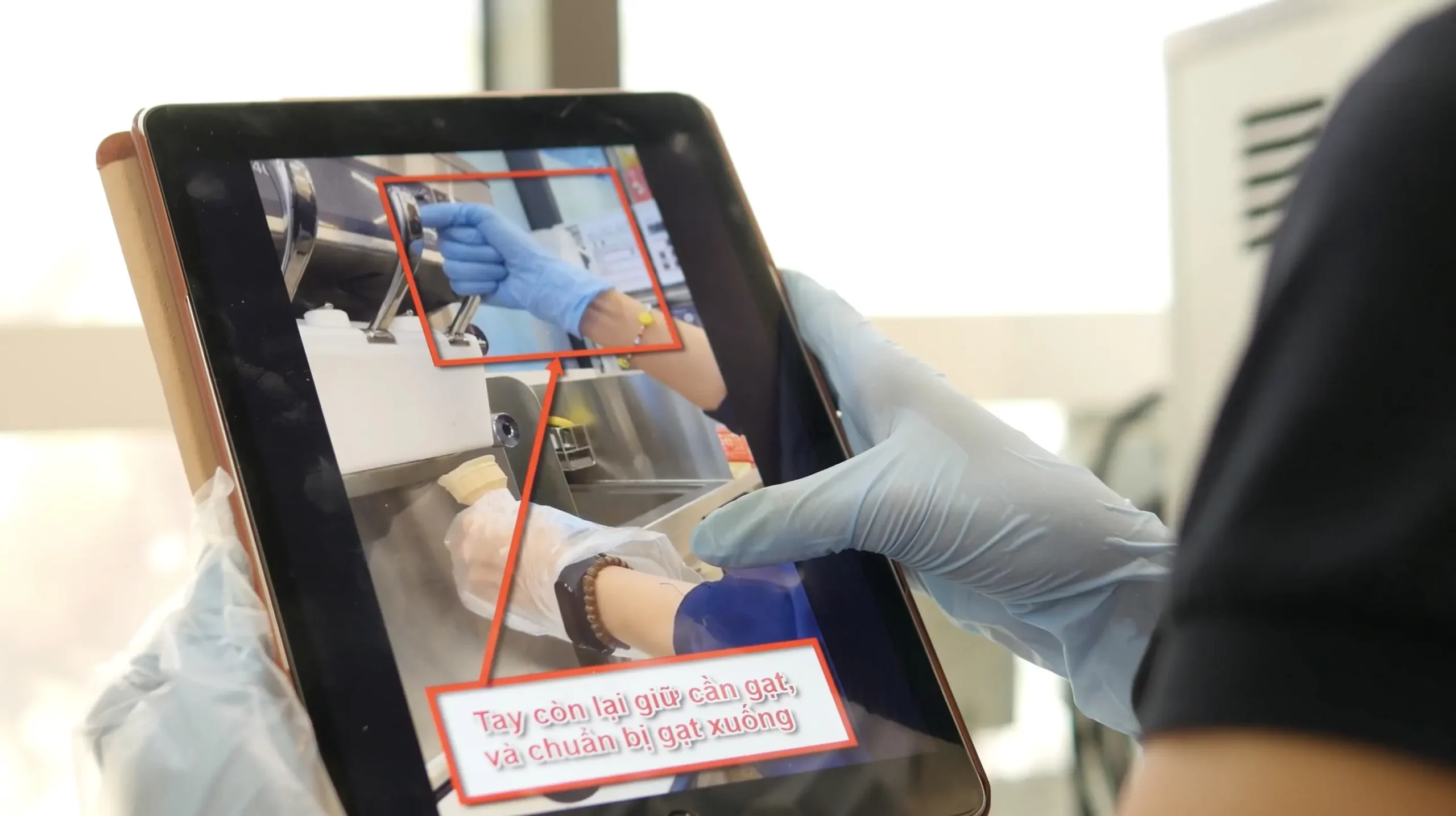
Aeon Viet Nam Company Limited
The Manual System Leading to Success in International Multi-Branch Expansion
Aeon Group, Japan’s largest supermarket chain, began by launching comprehensive supermarkets. Since 2020, it has expanded its network of small supermarkets (such as MaxValu) to over 16 locations in Vietnam. The company, renowned for developing and managing large shopping centers, has shifted its strategy to open small supermarkets in Vietnam, a market that still favors traditional “wet markets.” This expansion aims to build brand awareness rapidly, with a target of 100 stores by 2025.
In this interview, we spoke with Mr. Shigehiro Oku, General Manager of the Aeon Vietnam Supermarket Project, who has been stationed in Vietnam since the project’s inception, to discuss the decision to implement Teachme Biz, its practical applications, and the achieved results and future plans of the company.

Mr. Shigehiro Oku – General Manager Super Market Project
Manuals Are Key to Chain Store Multi-Branch Management
- Could you explain the background of implementing this system?
In the ASEAN region, supermarkets are not yet widespread, and people are still accustomed to shopping at wet markets. Our main goal is to expand MaxValu branches to become well-known and closely accessible to customers. In Vietnam, we cannot use distribution centers or wholesale systems like in Japan, so we must find ways to procure and deliver products to meet the same standards, which is a significant challenge.
Additionally, customer service aspects such as welcoming smiles, greetings, and assistance—including the concept of customer care and satisfaction—are new to Vietnam. The Japanese work culture and values that our company has cultivated are not easily understood locally. We must start with a team that holds different values than ours. Therefore, the most difficult task is undoubtedly developing personnel to meet the same standards.
- Why did you decide to implement a manual system?
The business model that can truly generate profits from large-scale branch expansion is the chain store model. Looking at our future goal of expanding to 100 branches, we believe it is essential to have a common ‘work standard,’ and ‘work manuals’ are what will help us achieve this.
We received fresh food product manuals from our parent company in Japan, which were 300 pages thick. Translating and adapting them into Vietnamese was nearly impossible. Moreover, many of the material handling equipment were unfamiliar in Vietnam, making it difficult for employees to understand from paper manuals alone. We began looking for other ways to help employees understand the content more easily.

Using Images and Videos to Overcome Language Barriers and Communicate Effectively
- What were the factors in choosing this system?
During a temporary return to Japan, I inquired with affiliated companies about manual creation tools and came across Teachme Biz. Upon review, I found that creating or updating manuals was very easy. Just insert text, images, or videos into the provided templates. The system also has a ‘step structure’ that gradually displays each step, making it easy to understand and allowing us to clearly illustrate work details. Plus, sharing was straightforward.
After seeing it in action, I decided that this tool would truly help bridge the language barrier. I was slightly concerned that Teachme Biz was a service from a Japanese company, but Studist, the developer, has a branch office in Thailand and provides support in English and Vietnamese. I felt confident and decided to implement the system.
- Could you describe the practical use of Teachme Biz?
In Vietnam, we frequently adjust the sales floor according to supplier delivery situations. We started by clearly defining the work processes for each store section to create standardization and link them to the manuals. Originally, we used computers and sent planogram documents to employees. Now, we print QR codes and attach them to the shelves, allowing employees to scan them with their smartphones or tablets for instant access to information.
Our initial goal is to ensure employees have constant access to the manuals, so we plan to integrate them with the store’s work schedule. As the number of manuals increases, employees may find it difficult to locate the specific manuals they need. Therefore, we intend to print QR codes for key manuals and place them in appropriate locations for convenient and targeted access.

Clarifying Instructions in Language-Barrier Environments
- What results have you observed from implementing this system?
For the project team, Teachme Biz is a tool that truly conveys instructions and facilitates understanding across language barriers. Ultimately, what we need to communicate and train employees on can be most clearly explained through images and videos. This is significantly different from paper manuals. Communicating through video makes our messages tangible, solving the biggest communication challenge: showing employees ‘how’ to perform tasks.
Additionally, using ‘Professional Service’ (note below) provided us with advice and new ideas for using Teachme Biz that we might not have thought of ourselves. It has been immensely beneficial.
Note: *Professional Service: Consulting and support from Studist’s expert team to maximize Teachme Biz usage. Contact us for more details.
- What are your future usage plans?
I think Teachme Biz is an ‘excellent tool’ for those who work abroad and face language and communication challenges. As of now (July 2023), we have created about 200 store operation manuals and about 100 office manuals. The fact that employees find our manuals easy to understand is a significant encouragement for the creators, as it shows that their work is being used and is beneficial. I hope the team continues to enjoy creating valuable content.
